Micro-LED vs. OLED TV: Which TV tech will win?
Micro-LED offers the first real challenge to OLED's TV supremacy, but is it worth waiting for?

2021 promises to be an exciting year in TV technology, as the first hotly anticipated Samsung MicroLED TVs reach the market in the coming months. As the first consumer product to use Samsung's new micro-LED displays, the upcoming TVs present the first real challenge to OLED as the premier TV display technology. That's a change that promises to shake up the TV world, offering more competition in the most premium segments of the TV market.
But how do the two technologies compare, and which do we think will be better?
We've been closely watching both technologies for some time, as we review new TVs and participate in technical briefings and prototype demonstrations. We've looked at industry reports and joined technical briefings to learn more about how micro-LED will stack up against OLED in the coming battle for TV display supremacy.
So let's review both technologies individually, and then compare point-by-point how each will contend for the throne of top TV technology.
What is OLED?
The current top-of-the-line display technology is OLED, which stands for organic light-emitting diode. The first OLED TVs only arrived in the United States in 2013, making the technology relatively new. From the outset, OLED has been a premium technology, offering superior picture quality, but at a substantially higher price than cheaper display options, such as LCD.
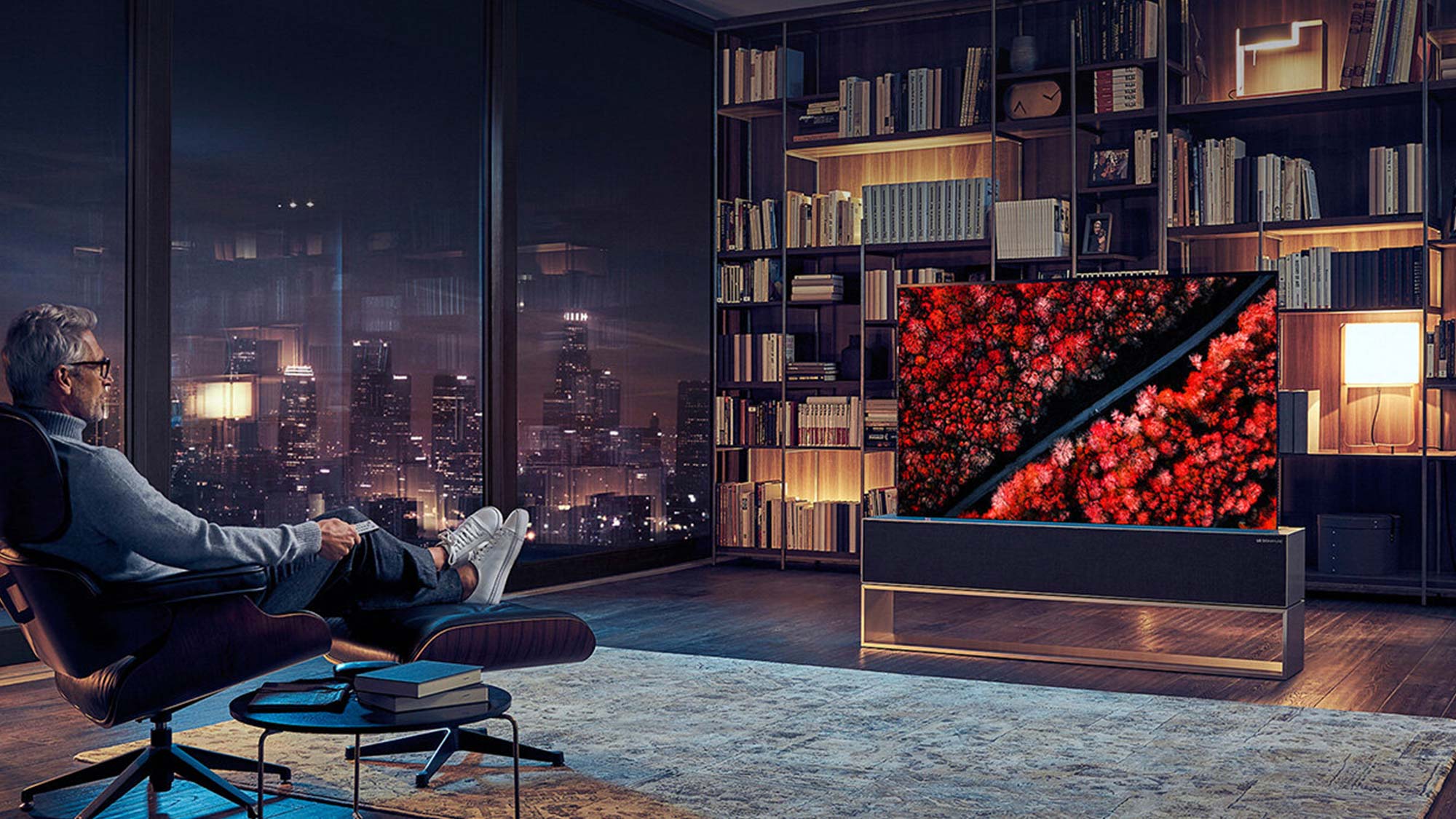
OLED is distinguished by both the flat form factor which allows it to be applied directly to glass, as well as its light emitting properties, which eliminate the need for a separate backlight, allowing for slimmer TV designs and better power efficiency than LCD displays.

The current leader in OLED technology is LG Display, the only major manufacturer of TV-sized OLED panels. LG OLED panels appear not only in LG Smart TVs, like the one seen in our LG CX OLED TV review, but also premium smart TVs from Sony and Vizio, such as those seen in our Sony Master Series A9G OLED TV review and Vizio OLED TV review.
Sign up to get the BEST of Tom's Guide direct to your inbox.
Get instant access to breaking news, the hottest reviews, great deals and helpful tips.
That market supremacy LG OLED enjoys is one clear driver for Samsung's pursuit of micro-LED displays, since it offers many of the same benefits of OLED, but with Samsung holding the reins to proprietary technology and manufacturing.
What is micro-LED?
Micro-LED is an even newer advancement than OLED, with the first Samsung MicroLED TVs announced this year. Since 2018 Samsung has been demonstrating micro-LED technology at trade shows such as CES and IFA, but these demonstrations have primarily been commercial-grade displays measuring 120 inches or more.
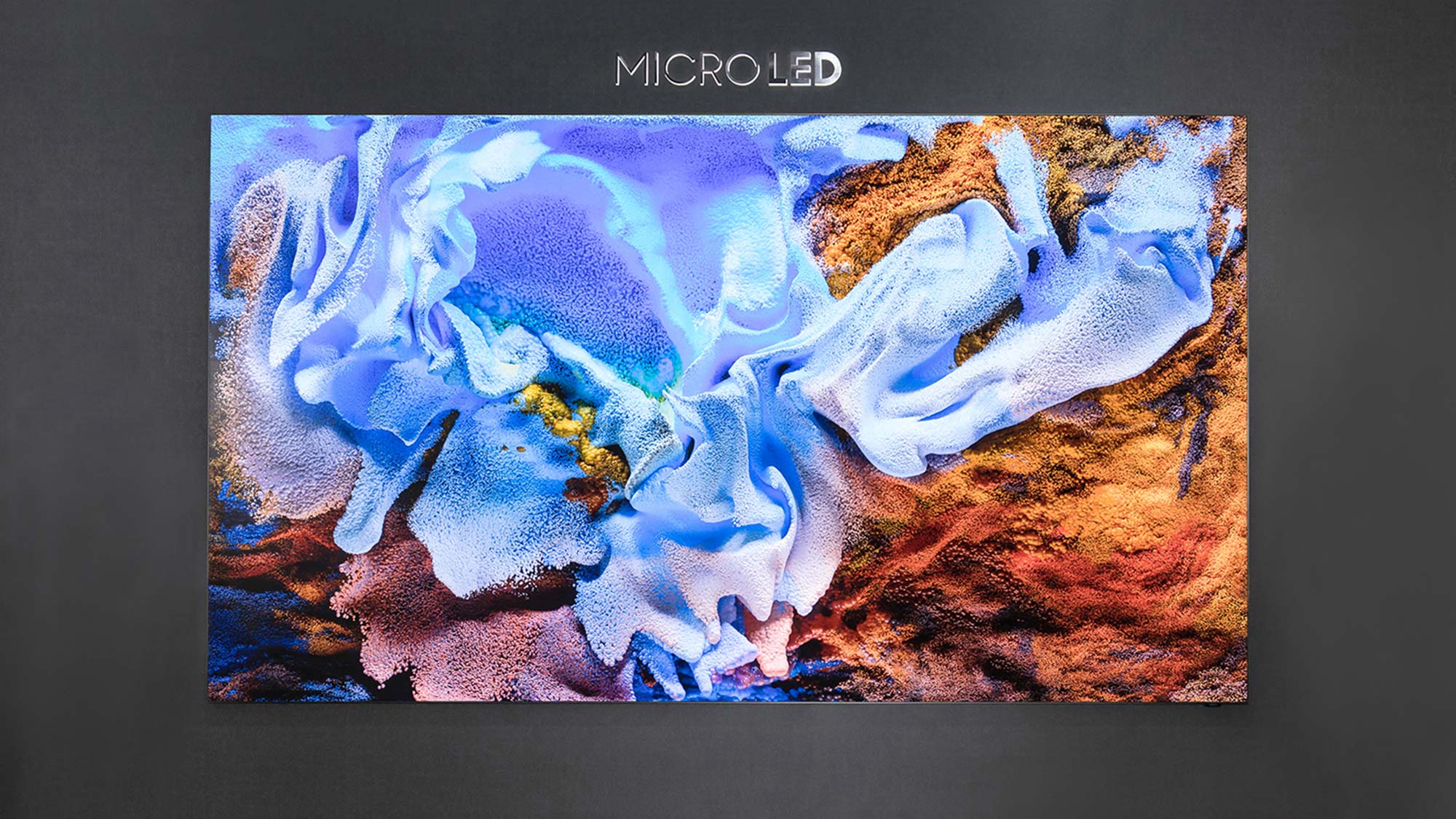
Micro-LED (not to be confused with mini-LED) is a newly developed technology which uses microscopic LEDs as individual pixels in the display. Think of it like a Jumbotron screen, but with much finer pixels and higher resolution. In fact, the resolution has gotten high enough to support 4K ultra HD in the first Samsung MicroLED TVs.
Each pixel in a micro-LED display is actually made up of three microscopic LEDs: Red, blue and green. These combine to provide any color of visible light necessary for an individual pixel, and then combine with several million other pixels to provide the same detailed 3840 x 2160 resolution you'll see on current 4K TVs.
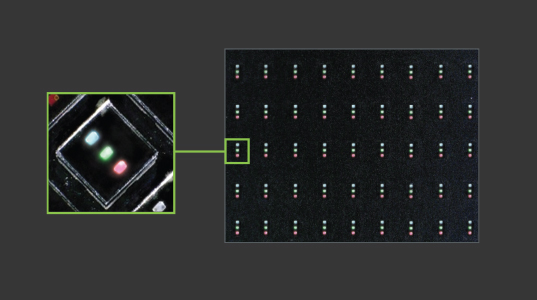
The first hurdle to making micro-LED technology viable for in-home use was the size of LEDs. A standard LED is much too large, but LED sizes and manufacturing practices have shrunk these tiny lights down to 1/100 the size of a conventional LED. Measuring 0.002-inch across, these micro-LEDs are almost invisible to the naked eye, and can be packed alongside one another to form seamless displays at very high resolution.

In addition to having a small enough LED to use, the manufacturing processes of combining these millions of pixels onto a usable surface has been an ongoing challenge for Samsung, as new manufacturing processes have been developed and entirely new technologies created for micro-LED displays.
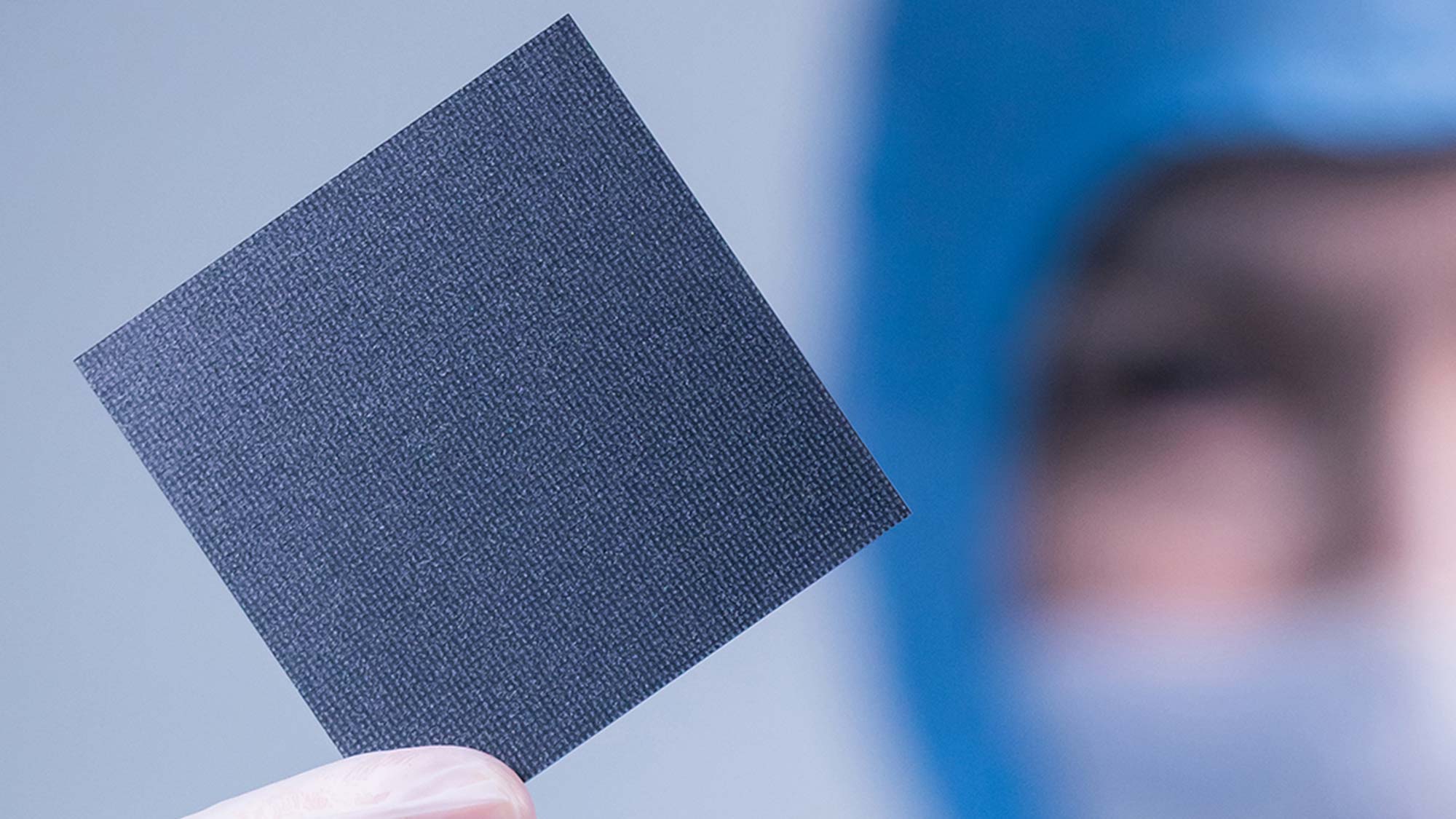
In the past we've seen micro-LED displays combine several pixel packed wafers into a single tiled surface. Samsung has touted this as an option that would allow modular screen designs, but it sounds like the first MicroLED TVs will be prefabricated single units that use normal aspect ratios.
Micro-LED vs. OLED: Sharpness and resolution
When it comes to picture quality, our perception of what makes a great picture comes down to a few elements. Chief among these sharpness. Sharpness speaks to the fine detail visible in a given picture. On a 4K ultra HD screen, much of this perceived sharpness comes down to resolution. And with both OLED and micro-LED TVs offering the same 4K resolution, the level of detail should be the same.
Sharpness settings are a little different, with video processing making on-screen objects more distinct by actually adding a subtle black line around an object to make it pop more on the screen. Since this isn't a function of the display technology, it won't make a difference in the comparison between OLED and micro-LED.
Winner: Tie
Micro-LED vs. OLED: Black levels
One of the big differentiators between OLED TVs and LCD sets is the quality of the black levels. Because LCD sets are backlit, even when displaying black, the glow from the backlight looks more like grey, a phenomenon known as "elevated blacks".

OLED TVs, on the other hand, create true blacks, thanks to the ability to turn individual pixels off and limit illumination to the pixels where it's needed. It's a capability that non-OLED TVs haven't been able to match.
Micro-LED TVs, however, will match this per-pixel capability, and offer the same black levels that OLED currently has a monopoly on.
Winner: Tie
Micro-LED vs. OLED: Brightness and contrast
One of the only weak points of OLED technology is brightness. While improvements have been made to the brightness offered on OLED TVs in recent years, LCD sets have always been able to offer better brightness because they are backed with super bright LEDs. Even the brightest OLED TVs usually top out at 2,000 nits of possible brightness. LG is trying to improve OLED brightness with its new OLED evo technology, but it's limited (for now) to a single model in the LG OLED lineup.
Micro-LED, on the other hand, promises up to 5,000 nits of brightness, blowing past the brightest OLED, and even offering better direct luminance than LCD sets generally offer. With no filtering layers between the micro-LED pixels and the viewer, the boosted brightness of micro-LED will be completely undimmed.
Contrast is a related measurement that measures the difference between the darkest black and brightest white the screen can produce, and micro-LED looks to take a lead here, too. While both micro-LED and OLED promise true blacks, the higher brightness available on micro-LED TVs will give it a higher contrast rating. In practice, however, both technologies offer superb contrast, and contrast numbers rarely reflect the actual viewing experience.
Winner: Micro-LED
Micro-LED vs. OLED: Color quality
When speaking of color quality on a TV display, you're generally referring to color gamut, or the number of shades the TV can produce. This is measured within certain standardized color space specifications, such as Adobe sRGB, P3, and others. The vast majority of TVs selling now offer between 95 and 100% of the sRGB color spectrum, with gamut of 99.9% being representative of many premium TVs. The latest OLED models, however, routinely exceed the sRGB standard, with higher-than-100% scores in our color gamut benchmark tests.

With the tuned color and boosted brightness of micro-LED, we also expect Samsung MicroLED TVs to exceed 100%. We won't actually know this until we have an opportunity to test one of the new TVs and measure the color output of micro-LED for ourselves, but early reports suggest that micro-LED TVs will have a clear advantage when it comes to color reproduction.
Winner: Micro-LED
Micro-LED vs. OLED: Viewing angles
Viewing angle refers to the ability of a TV screen to maintain proper color and detail when viewed at an angle away from center. Because TVs are usually enjoyed in groups, where only one person can sit directly in front of the TV, wide viewing angles are greatly preferred because they let you enjoy a movie or the big game whether you're sitting in the middle of the couch or off in a recliner to the side.
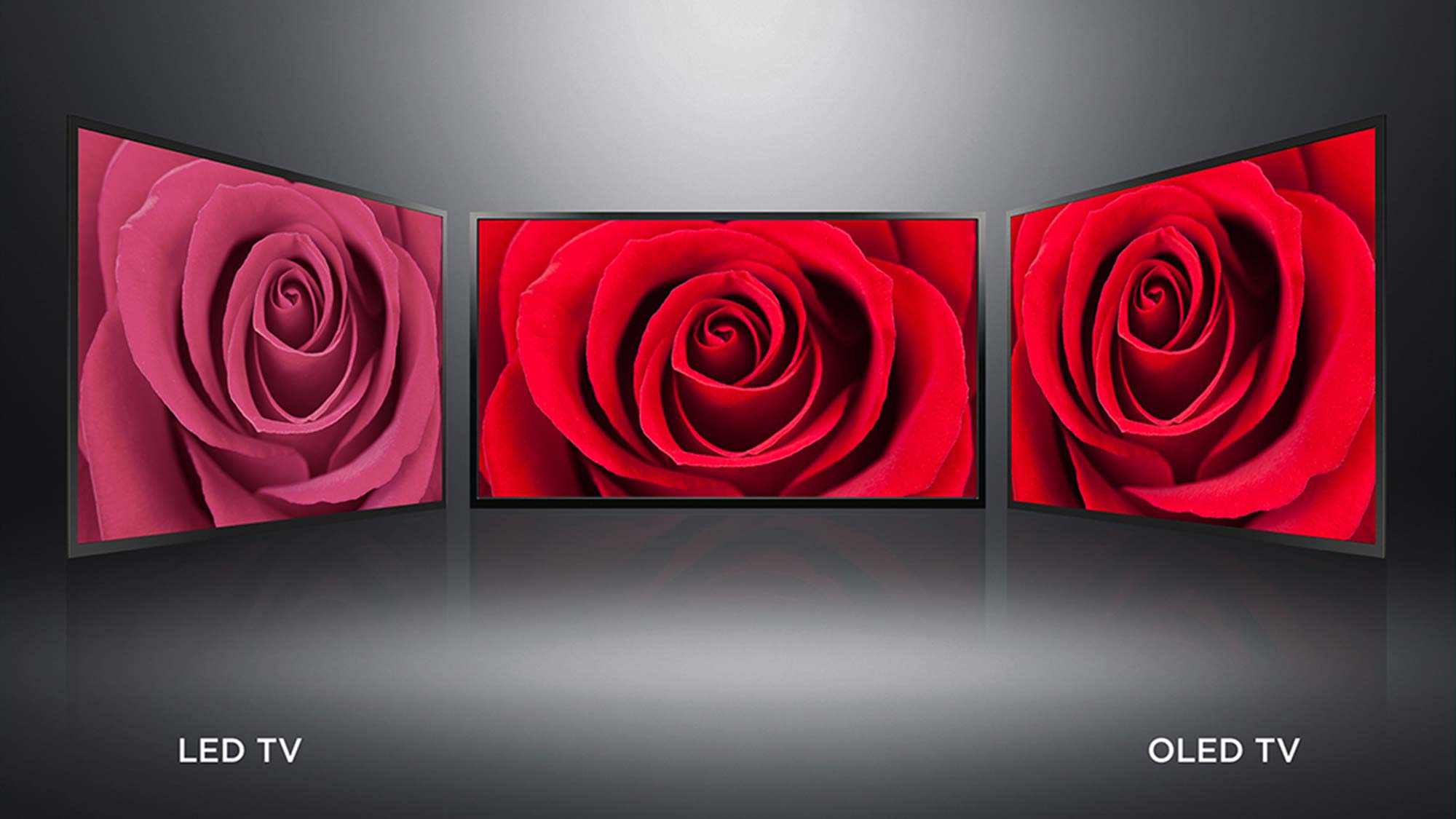
LCD TVs have frequently demonstrated narrow viewing angles, with noticeable color shifting and loss of detail when viewed from 45 degrees or wider. OLED TVs, on the other hand, have offered significant improvements with clear and accurate visibility out to nearly 90 degrees. This is due, in part, to the fact that OLED TVs put the entire display apparatus against the glass of the display, and there are no issues with parallax errors or color filtering that requires viewing from a specific angle such as you would see with an LCD set.
Micro-LED promises to deliver the same sort of all-angles visibility, with each color-producing pixel visible right on the surface of the screen. In fact, with no glass layer between the viewer and the pixels, micro-LED might actually offer better viewing angles than OLED already does.
This is, of course, largely speculative, and we'll have to wait for our first review to really know for sure. But in the demonstrations we have seen, and according to industry reports, the extremely wide viewing angles of OLED are easily matched by micro-LED.
Winner: Tie
Micro-LED vs. OLED: Burn-in
The other big problem with OLED TVs is the potential for screen burn-in. When a static image is displayed on-screen for long periods of time, there is a tendency for the active pixels to degrade at different rates, creating a ghostly afterimage that can be seen even when you change the channel or the picture changes. This could mean anything from faint rectangular outlines where news channel chyrons and stock tickers appear, to noticeable bars along the top and bottom from watching too many letterbox films.
Burn-in is a problem that OLED TVs can experience, and is a valid reason not to buy a used floor model from a retailer, because the floor models will often cycle through the same picture or video clips again and again over days or weeks, creating a real risk of burn-in on the display.

But for the average consumer, the burn-in problem has largely been solved for OLED TVs. LG uses pixel shifting technology, which actually detects static imagery on screen and alternates which pixels display it, in order to alleviate some of this uneven wear and tear. And OLED durability in general has improved, with color staying truer for longer, and risk burn-in being greatly reduced.
That said, it sounds like micro-LED won't suffer from this same problem. Individual LEDs are far less prone to color degradation in general, and long term color drift is less of a concern, so burn-in from displaying a static image shouldn't even be a worry.
Again, as with many aspects of picture quality and performance, we don't actually know this yet. Long-term testing and reports from owners may uncover burn-in issues with micro-LED TVs once they hit the market, but we have yet to see anything to contradict claims that burn-in is a non-issue for micro-LED displays.
Winner: Micro-LED
Micro-LED vs. OLED: Size
For those keeping score, micro-LED seems to be coming out ahead of OLED in our point-by-point comparison. However, one of the most important factors for any TV shopper may wind up being micro-LED's Achilles heel.
Because micro-LED is still a relatively new technology, and is pushing up against the very limits of how tightly packed pixels can be when using individual LEDs, there are real questions around what sizes micro-LED can be offered in.
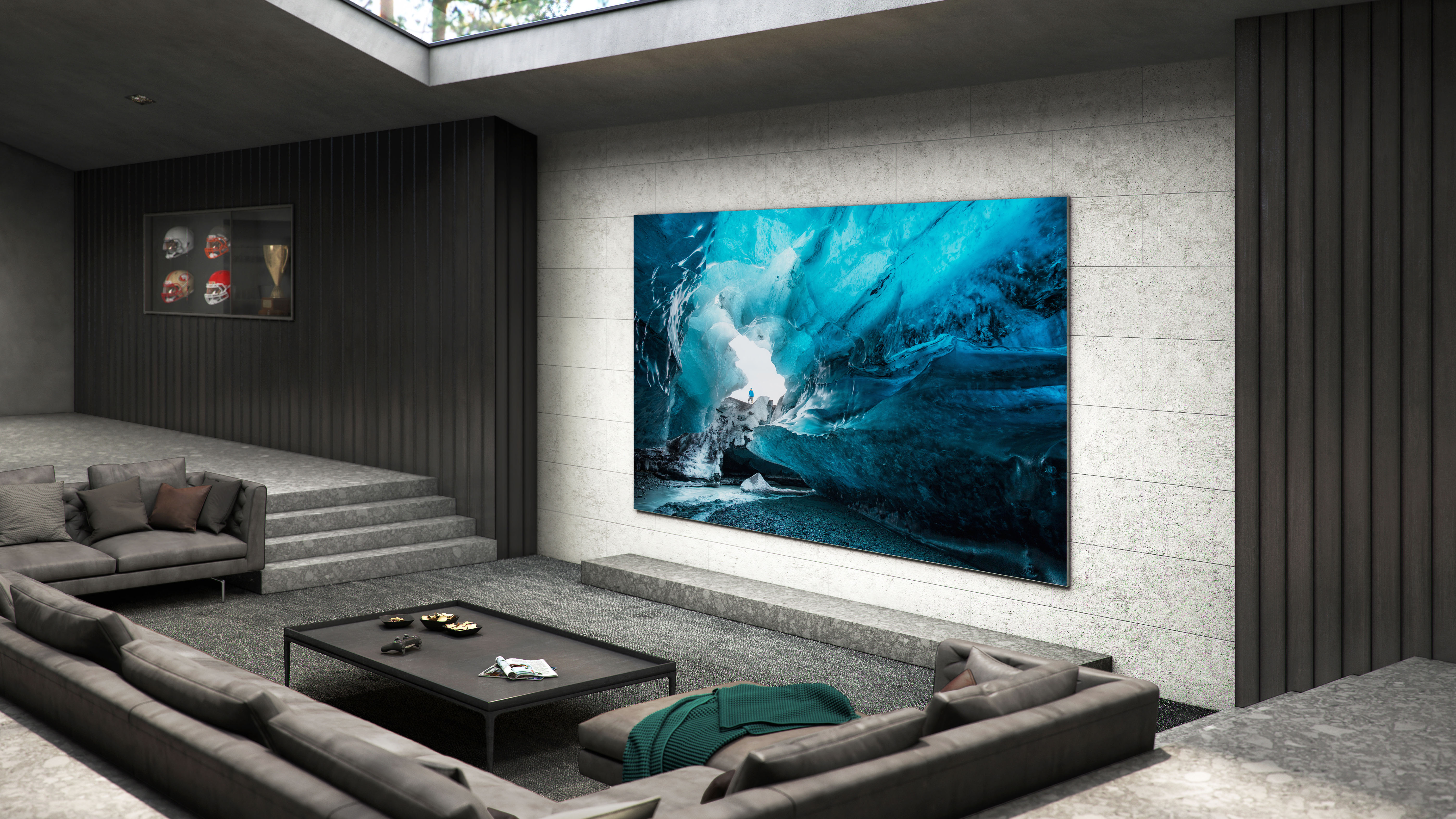
Even Samsung's MicroLED TV announcements leave some question marks unresolved, with some early reports claiming that MicroLED TVs will be available in sizes as small as 88-inches, but final announcements mentioning only 110- and 99-inch models, with the promise of smaller sizes by the end of the year.
Meanwhile, OLED is a far more mature technology, and OLED manufacturers have continued to evolve to meet the demands of 8K resolution, quadrupling the number of pixels to fit into a single panel. As a result, smaller displays with higher resolution have just recently reached the market, with the first LG 48-inch 4K OLED TV arriving late last year.
In a world where resolution and pixel density is king, smaller displays with higher resolutions are harder to make. And manufacturing processes that allow 4K resolution at 48-inch sizes offer pixel density that micro-LED cannot yet match.
But where this really becomes important is in the 55- and 65-inch range that makes up the most popular sizes for most households. Until micro-LED can fit into these constraints, Samsung MicroLED TVs may be a fringe technology at best, appealing only to home theaters where extra large screens dominate.
The flipside of this argument, however, is that micro-LED sets will offer some monster sized screens, with wall-sized options that dwarf the 75- and 85-inch TVs that represent that largest OLED and LCD models.
Winner: Tie. OLED will have more options for most homes, but Micro-LED will come in really big screen sizes.
Micro-LED vs. OLED: Price
Along those same lines is the question of price. OLED TVs have come down dramatically in price since their introduction only 8 years ago. Where a 55-inch OLED TV initially cost nearly $10,000, the editor's choice LG CX OLED can be bought today for less than $1,500, with prices dropping more than 85% in less than a decade.
Entry level models are even more affordable, with the LG BX OLED and Vizio OLED TV bringing the price down closer to the $1,000 mark. When sales pricing is factored in, it's entirely possible to score a decent sized OLED TV for less than a grand, provided you're willing to wait for the right opportunity.
Samsung has not yet announced pricing for its micro-LED TVs in North America, but we do know what they're selling for in South Korea, and it's more than just premium. With a pre-order price of 170 million won — $152,000 U.S. dollars — it's pricey even for the most premium TVs. This is a brand new technology, made on new manufacturing lines, with none of the efficiencies or economies of scale that LG has developed over the years. But even taking that into account, we're worried that Samsung's MicroLED TV might be priced too high to make a difference in the consumer market.
Meanwhile, LG has announced prices for it's 2021 OLED TVs, and they range from pretty affordable to reasonably expensive. The cheapest will be the 48-inch A1 OLED, part of LG's new entry-level OLED line, and scales up to $4,499 for the 77-inch G1 OLED with OLED evo technology, and $5,999 for the upcoming 83-inch C1 OLED, the largest 4K OLED LG is offering this year. That's a world of difference from the $100k+ price we expect for even the lowest price MicroLED TV.
Winner: OLED
Should you wait to buy a Samsung MicroLED TV?
If you're weighing whether to buy an OLED TV now or wait for Samsung MicroLED TVs to start selling, there's no need to stress about it. While micro-LED displays promise to be a game changer for the TV industry long-term, there's just not a good reason to buy one now.
The advantages offered by micro-LED are largely already available in today's OLED TVs, and the benefits of micro-LED are still largely hypothetical. Until we get to see the new TVs in the real world, we can't even definitively say that micro-LED's expected benefits will make a difference to the viewing experience on Samsung upcoming MicroLED TVs.
And what we do know is that Samsung's micro-LED sets will be extra large, extra expensive, and won't even offer better resolution than the 4K displays we've seen for years. If you have your heart set on splurging for a really big screen, we'd at least recommend spending the money on an 8K set, so that you have something more substantial to show off to friends and family.
And for most people, our advice remains the same: A 4K TV is the best use of your money, and OLED is the best version of 4K you can get today.
Brian Westover is currently Lead Analyst, PCs and Hardware at PCMag. Until recently, however, he was Senior Editor at Tom's Guide, where he led the site's TV coverage for several years, reviewing scores of sets and writing about everything from 8K to HDR to HDMI 2.1. He also put his computing knowledge to good use by reviewing many PCs and Mac devices, and also led our router and home networking coverage. Prior to joining Tom's Guide, he wrote for TopTenReviews and PCMag.

